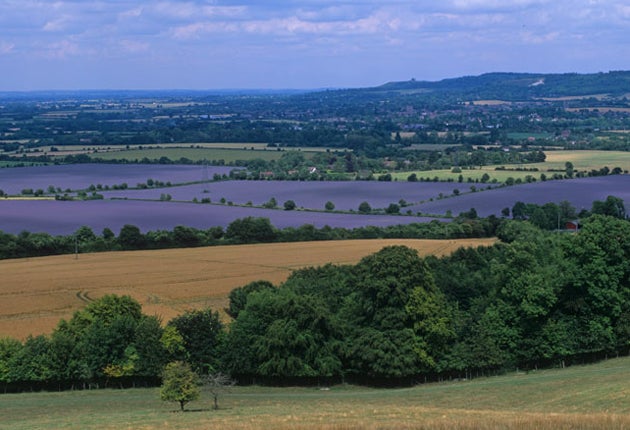View from the new 250mph rail route
Idyllic countryside chosen for first leg of Britain's high-speed train revolution.

Environmentalists have vowed to oppose the construction of a new £30bn high-speed rail network after the Government revealed the route would pass through one of Britain's most idyllic stretches of unspoilt countryside.
Lord Adonis, the Transport Secretary, said that the 250mph services could be running on the first phase of the track, between London and Birmingham, by 2026, slashing more than half an hour off journey times. Building work has been pencilled in to begin in 2017.
But the announcement also prompted the first round in what promises to be a bitter seven-year battle with local residents and environmental groups after Lord Adonis revealed he had opted for a route that passed through a large area of the picturesque Chiltern hills, in Buckinghamshire.
Building the 128 miles of new track between London and Birmingham will cost around £17.4bn. Lord Adonis said that he backed blueprints for extending the network beyond Birmingham, which would see some services head east to Manchester, and others head to Sheffield and Leeds. Formal plans for the extended route will be drawn up by next summer. Completing the line for the entire 335-mile route between London and Scotland would see costs rise to £30bn.
Trains on the new line will take 49 minutes to reach London from Birmingham, down from the current time of 84 minutes. The services will terminate at Euston, north London. However, an interchange will be built at Old Oak Common, west London, where passengers will be able to take services to Heathrow airport and east London. Another intermediate stop will also be built near Birmingham airport, and a brand new station in Birmingham city centre.
Several routes were drawn up by HS2, the company appointed by the Government to study the feasibility of a high-speed network. The option selected by Lord Adonis will cut through one of the South-east's most idyllic valleys, Misbourne, with an official status as an area of outstanding natural beauty (AONB). Planning laws state that major building projects cannot take place in the areas unless they are clearly in the national interest and cannot be located elsewhere.
Trains will head past Chalfont St Giles, Amersham and Wendover. They will also pass close by to Ellesborough, meaning that the new track may well be in eye-shot of guests staying at the Prime Minster's official country residence, Chequers.
Campaigners are already preparing to battle the plans, which have now been put to a public consultation. They will argue that the areas are too historically and environmentally significant to disturb. The cottage of the poet, John Milton, has been preserved at Chalfont St Giles. The Misbourne Valley is home to the Misbourne chalk stream and historic parkland. Thousands of acres of farmland and woodland would be lost if the project went ahead as planned.
Several other possible routes that avoided the region were dismissed for having too great an impact on built-up areas such as Luton. However, the Government has said that around a third of the route through the Chilterns will be tunnelled in an attempt to mitigate its environmental impact.
The Chilterns Conservation Board said the line would not be in the national interest and called on Lord Adonis to reconsider. It added that the net benefits of the line had not been proved and could not "justify causing irreversible damage" to the Chilterns AONB.
"I have told Lord Adonis that we oppose the routing of the new high speed rail line through the Chilterns. I expect we will get strong support from local people," said Sir John Johnson, the board's chairman. "Lord Adonis has promised there will be lengthy consultation with local communities before taking a final decision. He has agreed to visit the Chilterns."
Sir John was joined by other environmentalist in raising concerns about the new line. "By using existing and disused transport corridors as well as tunnelling, the impact on the Chilterns is less than feared," said Ralph Smyth, senior transport campaigner for the Campaign to Protect Rural England. "But the impact on Warwickshire, where the line is proposed to run through open countryside, is a major concern."
Lord Adonis said he had not ruled out the possibility of building a hub station at Heathrow airport for the high-speed services, favoured by the Tories, and has appointed Lord Mawhinney, the former Tory Transport Secretary, to examine the issue.
Theresa Villiers, shadow Transport Secretary, said: "In leaving out Heathrow and setting out plans that give no firm guarantees north of the Midlands, Labour's plans are flawed both by lack of ambition and undermined by their inability to grasp the basic truth that high speed rail should be an alternative to a third runway (at Heathrow) not an addition to it."
Subscribe to Independent Premium to bookmark this article
Want to bookmark your favourite articles and stories to read or reference later? Start your Independent Premium subscription today.

Join our commenting forum
Join thought-provoking conversations, follow other Independent readers and see their replies